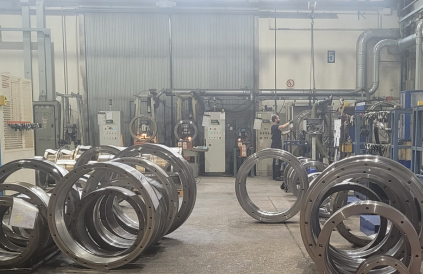All news
Press review Spare Parts
Basic rules for the correct use of Dies
Dies are important components of pellet mills, responsible for shaping raw materials into pellets of consistent quality and characteristics. They are essential to ensure efficient pellet production and optimal performance of the pellet mill.
Using dies in a pellet mill involves several key rules to ensure proper functioning and optimal pellet production.
- Die Selection: Choose the appropriate die size and hole diameter based on the desired pellet size and the type of material being pelletized. Different materials may require different die specifications.
- Die Conditioning: Before initial use and periodically during operation, condition the die properly by running a small amount of material through it. This helps to remove any contaminants and creates a smooth surface for pellet formation.
- Die Installation: Ensure the die is installed correctly and securely within the pellet mill. Any misalignment or loose fitting can result in poor pellet quality and premature wear of the die and other components.
- Die Clearance: Maintain the proper die clearance, which is the space between the rollers and the die. This clearance affects the density and quality of the pellets. Adjust the clearance as needed for different materials and pellet sizes.
- Die Cleaning: Regularly clean the die to prevent buildup of material residues, which can affect pellet quality and cause blockages. Use appropriate cleaning tools and methods to avoid damaging the die surface.
- Die Lubrication: Apply lubrication to the die and rollers as needed to reduce friction and wear. Use lubricants recommended by the pellet mill manufacturer to ensure compatibility and optimal performance.
- Die Inspection: Periodically inspect the die for signs of wear, such as erosion or deformation of the die holes. Replace the die when necessary to maintain consistent pellet quality and production efficiency.
The die clamping rings should be checked every time a new die is put on the machine, especially for those dies designed with big flanges. From experience, in the majority of cases where a die has broken, the cause has been due to a worn out or defective clamping ring. Dies running with a defective clamping ring can give rise to strong vibrations, die breakage and reduced die life.
- Die Maintenance: Follow the manufacturer's guidelines for routine maintenance tasks such as sharpening or reaming the die holes, which can help extend the lifespan of the die and ensure consistent pellet production.
Maintenance means avoiding the risk of breakdowns and plant downtime. Preventable problems are the cause of many mechanical or electrical failures and malfunctions. In any case, nothing that can't easily be avoided with good regular maintenance.
- Die Changing: When changing dies, carefully assess the condition of the die seating surfaces and of the fixing systems (collar, clamp, or wear ring). Careful: if the die is not properly fixed, it can break. If problems are experienced during start up, operate the die for 20–40 minutes with a mix of bran, oil (2%), and abrasive powder (2%).
- Die Storage: Store spare dies in a clean, dry environment to prevent rust and contamination. Proper storage helps maintain the integrity of the die surface and ensures reliable performance when needed.
By following these basic rules for die use in a pellet mill, you can optimize pellet quality, production efficiency, and the lifespan of your equipment.
